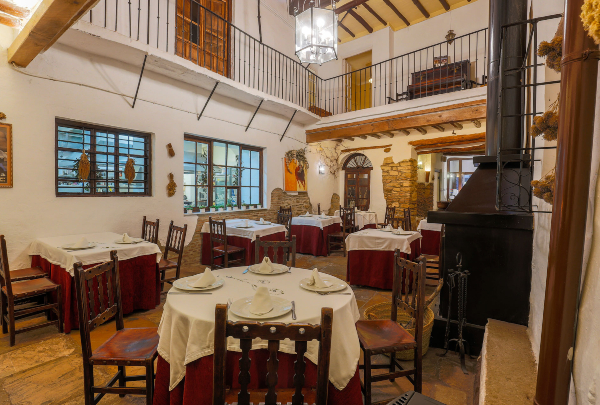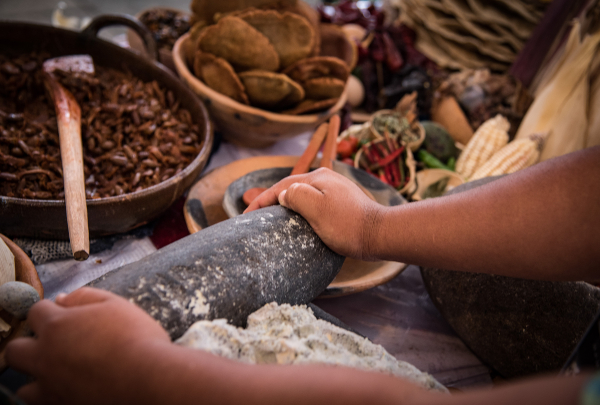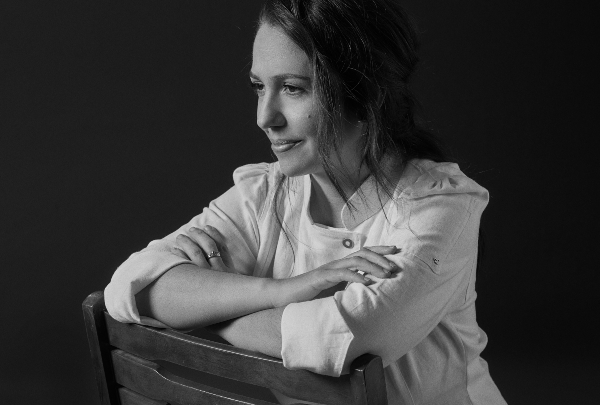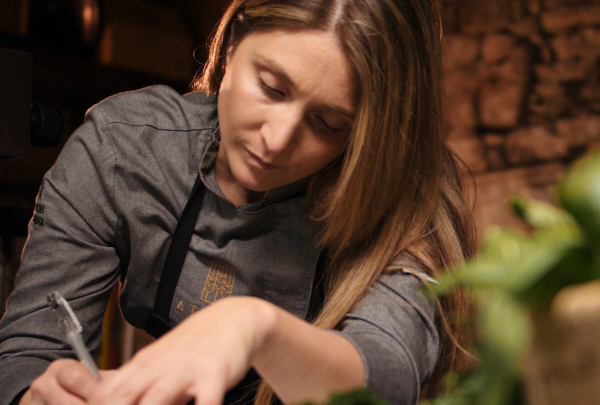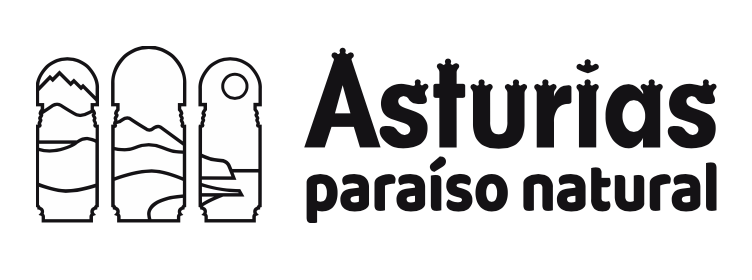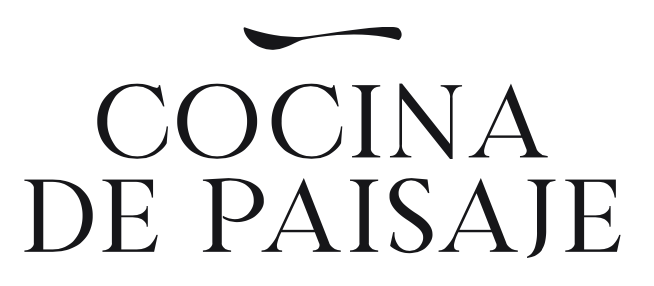Interview
Elena Lucas: "In the rural environment, it's women who have always done the cooking, they were the mainstay of businesses such as bars and small taverns"
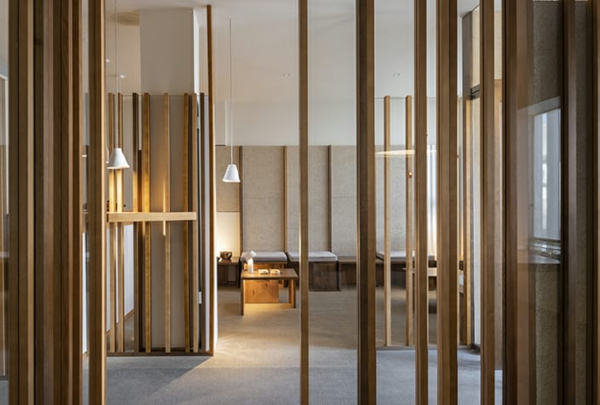
The in thing these days is to talk about getting the most out of the environment's resources, but this is not so much the in thing for Elena Lucas as her understanding of cookery since she moved into the family business 20 years ago. Since then the scenery around the small village of Navaleno has been her culinary muse.
We'll soon be seeing you on stage. What will you be talking about?
I'll be focusing on the pine forest as a source of inspiration, because where I live is surrounded by a pine mountain, and that's what you see beyond the restaurant's windows. I'll also be talking about how to cook the legacy handed down to me by my mother and my grandmother. After all, I'm from a family of female cooks, and I'll be demonstrating how to cook the traditional recipes from my point of view, with mycology as the main ingredient.
Mycology, in fact, is one of your best cookery tools. You've made fungi the star ingredient, introducing a different culinary perspective and demonstrating how versatile they are ...
In my opinion, it's not just about sauteing them. They have textures ... depending on how you cook them, they release a jelly resembling some of the usual cooking ingredients ... And, really, when you come here you have to eat fungi, but in a way that makes you think ... For example, someone might say "I'm eating an amanita", but they call it "cococha" because it has that jellylike fish-neck texture".
I try to make fungi the star of the show and the main ingredient of the meals, without forsaking traditional recipes. I try to transform them. Sometimes the sous-vide cook is quite short, and on other occasions it's longer because we want the product to release all its substance and flavour ... I like changing them without transforming the taste, to see how far they can go.
But it's not an easy product to cook - it calls for extensive knowledge because some fungi can be toxic ...
Yes, you have to have knowledge of a fungus before you can use it. You have to know how to cook them, how they have to be preserved, and the storage conditions. You can't just gather fungi because "they look right". No, you have to be very sure of what you're using.
Morchellas, for example, always have to be cooked for 20 minutes to remove the toxicity, and you can't use that water afterwards. You even have to scald fairy ring champignons a little because, even though they aren't toxic, you have to remove some of their particles to improve digestion. And you have to be careful, because you can make mistakes when you're gathering fungi. There's no need to be scared of fungi, but you need a healthy respect for them.
We also have to realise that this product doesn't last forever. Fungi have very short lives when they're gathered, and they can't be left in the cold room for more than a few days. Depending on the fungus, it might last for 5 or 6 days, but mica caps only last a day, for instance. They're no good the day after. These are things you have to know.
Another of your star cookery products is pine and its by-products ...
Yes - in spring we use its flower, and we extract what we call "pine caviar" from that. It breaks down into tiny little spheres that explode in your mouth, and hence the name.
The flower produces the pollen we use for a month or a month and a half, because in hot weather it evolves very quickly. And then there are pine cones - from tiny little babies until they mature - for pickles and flours - and we lyophilise them.
Depending on the season, we can make desserts, sponges, sauces or curds ... some of the items are added to the traditional round of recipes.
And how does someone come across such an unusual ingredient in today's cooking?
Because I have it to hand ... and you walk about, you have a good idea of the seasons - you realise that when the flower moves it releases a pollen, you smell it, and you taste it ...
It's curiosity that makes you wonder whether the things you see could work in cookery. It's really just sheer curiosity, and trying things out. And it's right there at the door to the restaurant ... maybe if I had to order it or I didn't see it every day, I wouldn't have used it, but the fact that it's there at my door prompted me to take it.
What other items in your environment have made their way to your larder?
We did a test once with pine tree bark. We cooked it and grated it, but it didn't work out too well. There's still a path to be trodden there because I know of countries where they use that in foil-cooking, for instance. And this is something I still have to develop.
We also did tests with the elder tree, with its flowers and the berries too. We have two elders at the restaurant, and we do things here and there with them, such as flavoured waters, gels, ice cream, jam etc. In fact, we try to use everything that can be found around the mountain in our cooking.
You went for the rural environment from the beginning ...
We wanted to carry out a personal professional project with the family business, with no intention other than living where we wanted to live. We concentrated on our own territory, and really, what I do, and what I think, the kind of cooking we do, made and makes sense here.
If we were located somewhere else, then another concept would probably make sense, but I didn't want to lose my roots or my origins, and that's why 20 years ago we decided to stay here.
When you started work at the restaurant, it had been operating for about 50 years, through two generations. Didn't you feel the responsibility weighing on you a little more because it was a family business?
Yes, certainly. The responsibility of not letting them down, and enabling the business to move forward ...
I've shouldered that responsibility since the outset, and when they tell you "here's the business, start putting in your ideas, your criteria, you're bound to make mistakes and you will make mistakes, but we're here to make this work ..."
Maybe following your own instinct, fighting for your culinary personality and not getting sidetracked by trends helped you ... now everyone's talking about km 0 and making the best use of resources, but you were already doing that 20 years ago ...
Exactly. The produce I used from my own environment was out of necessity. You have to realise that 18 or 15 years ago it was a complicated process for produce to get here. And now it would seem to be really easy, you just make a couple of calls, and it seems easy, but it wasn't easy back then. So in the end you had to get the resources from what you had around you. The smartest thing to do was to use that, and see how far we could go with it.
And yes, trends are all the rage. It's fine to be aware of them, and even add them if they're useful, but at the end of the day you have to have your own personality and your own way of doing things. Otherwise, it would be chaos. Or it would be for me, at any rate.
The rural environment is better for closer relations and trust in producers ...
Yes, definitely. Truffles, for example, my truffle supplier ... Every week I'm lucky enough to go to their place, about 20 minutes by car, and choose the truffle I'm going to take home with me. I'm lucky enough to choose, to discuss what you like, what you don't like ... they already know what you need, and what you don't need ... and this is a relationship that can even turn into friendship.
You're setting up a relationship which is different, for example, if you had to contact a supplier in Madrid. You'd get the produce, of course, but there's no face there, or the supplier doesn't send you what you want, or you don't have the luxury of choice ... at the end of the day, these are the things you appreciate even more.
What kind of future do you see ahead?
Project-wise we have nothing on, because it's a complicated situation, and everything's on hold. But I would like to speak out in favour of the role of women. We need more visibility, especially in rural environments, where it's even more difficult.
Congresses and event help to showcase women, but that's not enough because, when the congress comes to an end, it's forgotten. We all need to be there, they need to see us all, and we have to close ranks. I hope women will be in the spotlight at this kind of congress, and people can find out more about them. But now we're there, after all, and this is an interesting opportunity.
In the rural environment, it's women who have always done the cooking, they were the mainstay of businesses such as bars and small taverns, and they took care of the home too ... my business, for example, is a matriarch setup with my mother and my grandmother ... but, even though women have always been prominent, they haven't been acknowledged.

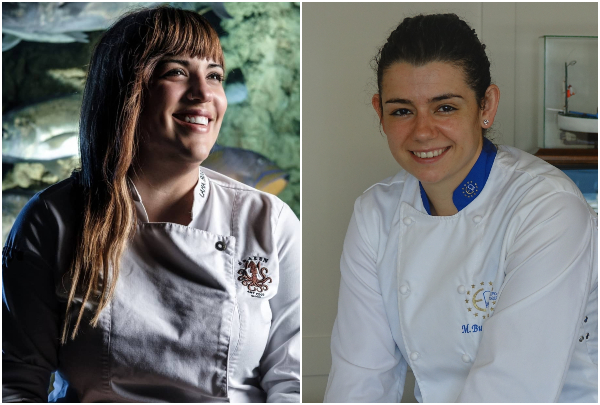
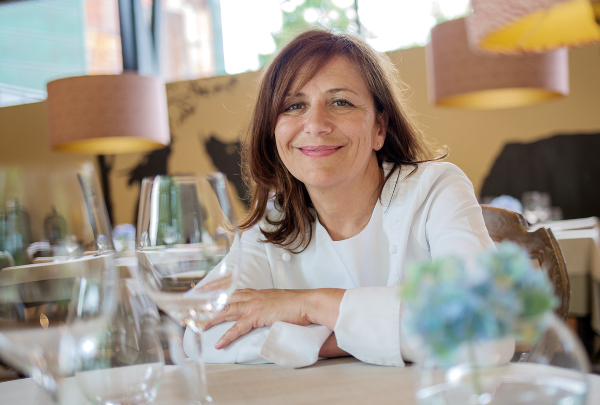
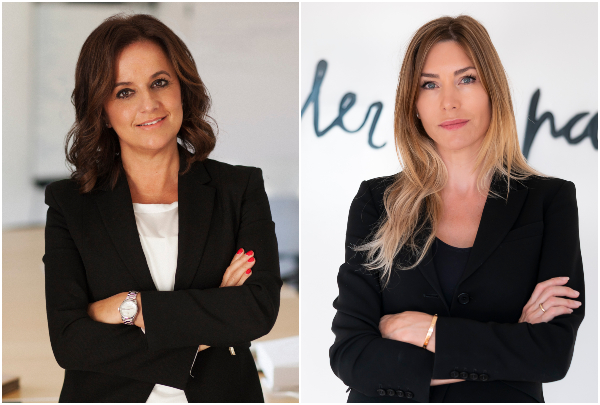
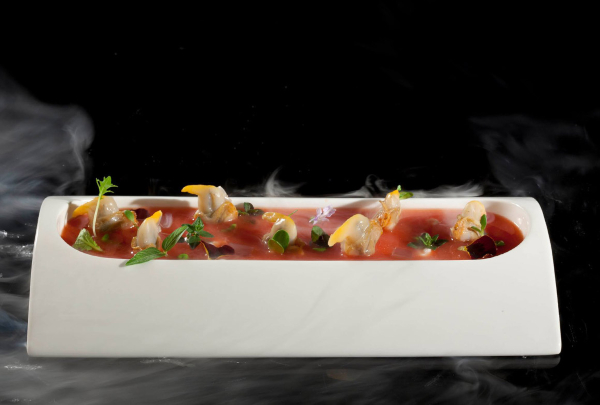
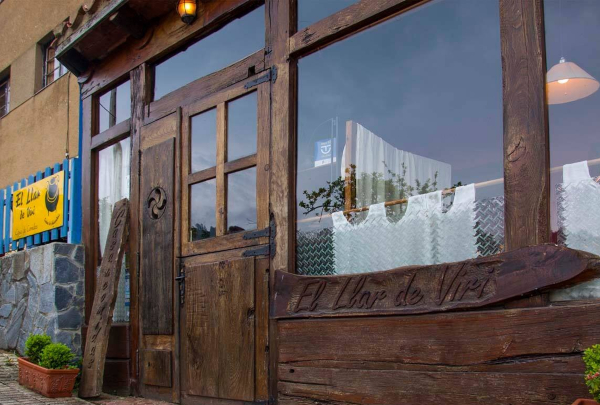
.jpg)
